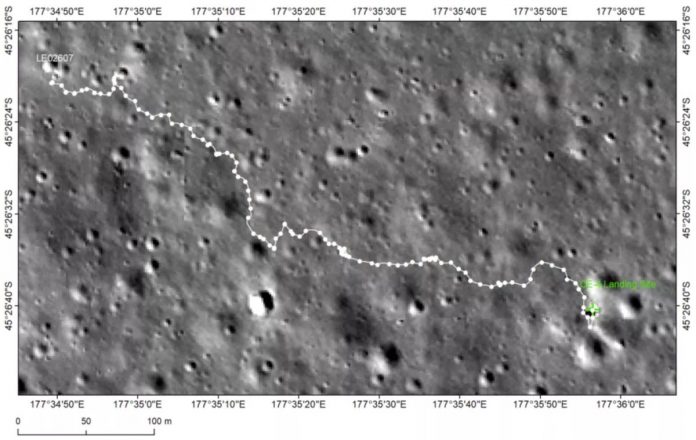China’s Chang’e 4 spacecraft are back in action for a 27th lunar day on the far side of the moon, but it’s the discoveries from the mission’s previous lunar day that have scientists excited.
The Chang’e 4 lander and Yutu 2 rover resumed activities on Feb. 6 after hibernating during the severe cold of lunar night, according to the Chinese state-run media outlet Xinhua. But one lunar day earlier the rover came across a curious rock specimen which the Yutu 2 drive team began to refer to as a “milestone.”
According to a Yutu 2 diary published by Our Space, the Chinese language science outreach channel affiliated with the China National Space Administration (CNSA), mission scientists agreed with the drive team that the elongated rock was worth closer inspection.
The team then planned to do a close approach and analyze the rock with Yutu 2’s Visible and Near-infrared Imaging Spectrometer (VNIS) instrument, which detects light that is scattered or reflected off materials to reveal their makeup.
VNIS has been used to investigate a number of rocks and regolith samples along Yutu 2’s path across Von Kármán crater. These include unusual melt glass specimens and potentially material from the lunar mantle.
While not looking particularly exciting to the untrained eye, the find has generated interest among lunar scientists. “It seems to have a shard-like shape and is sticking out of the ground. That’s definitely unusual,” Dan Moriarty, NASA Postdoctoral Program Fellow at the Goddard Space Flight Center in Greenbelt, Maryland, told Space.com.













